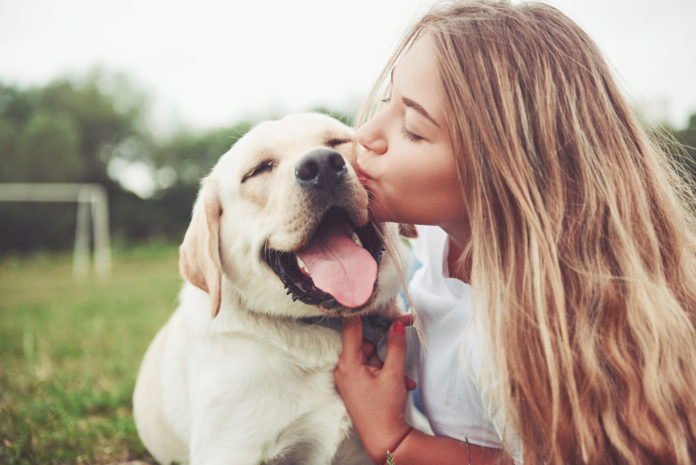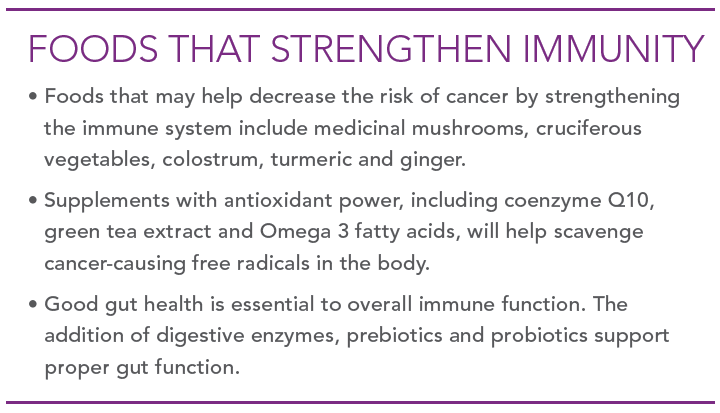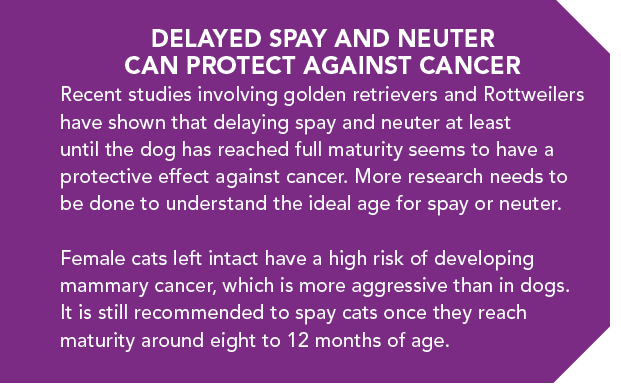Preventing cancer in our pets – is it possible?

While no one can predict which dogs or cats will develop cancer, there are steps you can take to reduce the risk.
Cancer rates in dogs and cats are rapidly increasing, much to the dismay of animal parents everywhere. One in three cats and 1.65 of every two dogs are estimated to develop cancer; half of all dogs over the age of ten will be given this dreaded diagnosis. These alarming statistics are enough to make any animal lover cringe, but is it possible to decrease the chances that your dog or cat will die of cancer? There has not yet been enough research in the veterinary field to ascertain exactly what causes certain types of cancer in dogs and cats, or how to prevent them. But there are measures you can take to help ensure optimum health and longevity for your own canine or feline companion.
1. Feed him a healthy whole-food diet
First and foremost, diet is key. Food is the foundation of life; without good nutrition, it is impossible to achieve optimum health. While many say that raw feeding is the only way to go, there really is no “one way” to feed dogs and cats. Some will thrive on raw diets, while others may struggle with digestive disorders when fed raw meals.
Rest assured, however, that fresh, organic, antibiotic- and hormone-free whole-food diets provide the best nutrient quality for promoting health and longevity. Preparing meals at home will provide the freshest ingredients, although it’s not always easy to do. For those who want to home-prepare meals for their dogs and cats, it is crucial to ensure the diet provides all the essential vitamins, minerals, fats and amino acids necessary for each species. It may be difficult to provide completely balanced meals without the addition of synthetic vitamins and minerals, unless the animal parent is willing to source some unique ingredients. Working with a veterinary nutritionist or food therapist is the best way to ensure that all nutrients are provided in the right amounts. In general, the less processed the food, the better.
If you are buying packaged foods, select the highest quality products you can afford. Avoid foods that contain dyes, preservatives such as BHT and BHA, added sugars, and ingredients that are suspected carcinogens, such as carrageenan. Unfortunately, glyphosate (the chemical weed killer known as Roundup) is infiltrating many of the food and water supplies to which our animals (and we) are exposed. Glyphosate is found in grains, animal meats, fruits and vegetables. Feed your dog or cat non-GMO, locally-sourced ingredients whenever possible. It’s also a good idea to avoid foods, such as low-end commercial kibbles, that have undergone high heat processing.
2. Keep his weight and stress levels down
Maintain a healthy weight in your dog or cat, and do not allow him to become obese. Obesity causes inflammation, which can lead to cancer. Exercise and mental stimulation are extremely important to maintaining optimum health. Frustration, separation anxiety and confinement can lead to emotional imbalances that contribute to immune system stress. Appropriate outlets include exercise, competition and training. Don’t forget about indoor cats – they need stimulation too. Interactive toys can be a great way to get them moving.
3. Avoid over-vaccination
This is critical to canine and feline health. While vaccines provide immunity to life-threatening diseases, they should be given in moderation. Research has shown that dogs and cats maintain immunity against the core diseases of distemper, hepatitis, parvovirus and rabies for many years, and possibly for life. Unfortunately, since rabies is a zoonotic lethal disease, current laws mandate vaccination boosters much more often than our dogs and cats might require.

Boarding, daycare, grooming and training facilities, along with many veterinary hospitals, require proof of annual vaccination, resulting in the over-vaccination of millions of dogs and cats each year. When a vaccine is given, the immune system must respond by making antibodies against the injected antigen particles in the vaccine. When the immune system works hard to process multiple vaccines, the result can be allergies and auto-immune reactions, in which the body attacks its own cells.
Preservatives in vaccines can also cause an inflammatory reaction within the body, resulting in allergic reactions and sometimes tumors in the skin and muscle. Cats are particularly prone to developing fibrosarcoma tumors secondary to vaccination. The rabies vaccination has been most commonly incriminated in the development of these masses. Request a thimerosal-free product when the rabies vaccine must be given, to help decrease the chances of tumor formation.
Blood tests called titers can be done to determine whether an animal has immune antibodies against a disease; if antibodies are found, no vaccination is necessary. Titer tests are most commonly used for distemper, parvovirus and panleukopenia. Rabies titers are not accepted as proof of vaccination for licensing purposes in the US, even though many animals will hold valid immunity, based on titer testing, for ten years or more.
Consider your animal’s lifestyle when discussing vaccinations with your veterinarian. Leptospirosis, Lyme, influenza, feline leukemia and bordetella are all considered lifestyle vaccines and should only be given when there is a high risk of exposure.
4. Counteract chemical overload
Chemical overload has become a big problem for our dogs and cats over the past few decades. Pharmaceutical companies have worked very hard to develop preventative medications, that are convenient and easy to use, to keep our pets free from heartworm, intestinal parasites, and external pests such as fleas and ticks.
Unfortunately, this chemical load comes with a high price, not only for your wallet but also your dog or cat. Many of these medications are tested on only a few hundred animals before being released to the market, meaning your dog or cat is the “testing laboratory” for side effects and illness. Once a product is released, recall is very difficult. Hundreds or thousands of animals can become ill or die before a recall will occur. In most cases, it takes years to know if a particular product causes cancer.
Oral preventative products that last for a month or more cannot be taken back out of the body once administered. If your dog or cat has a reaction or illness secondary to administration, supportive care is the only option. Some immune-suppressant drugs used for allergy therapy are now being linked to increased cancer risk.
Essential oils are a great alternative for pest prevention. Application will be required more often, however, which translates to less convenience with some people. Essential oils must also be top quality and appropriately diluted when used on animals. Only use products from trusted sources.

Instead of routinely giving de-worming medications, have a stool sample tested twice a year, and only treat the animal if parasites are found. Find out what the prevalence of heartworm is in your area, and only medicate seasonally if needed.
5. Have him checked regularly and promptly
Grooming should be an ongoing routine for every animal, since the simple act of brushing may reveal a new lump or bump that could signal a problem. When you find a mass, have it checked right away to determine whether or not it could be suspicious. Pro-active diagnosis and treatment can greatly improve the outcome when cancers are caught early.
Pro-active diagnosis and treatment can greatly improve the outcome when cancers are caught early.
Up until the age of seven, your dog or cat should receive a complete annual physical examination with laboratory samples; once he’s over seven, exams and tests should be done twice a year.
While it is impossible to predict which animals will get cancer, we can nevertheless fight back by being our dogs’ and cats’ best advocates. Genetics and environmental factors may be beyond our control, but we can still reduce our animals’ risk of cancer by making good choices regarding food and supplements, exercise, chemical and vaccine loads, and veterinary check-ups.



